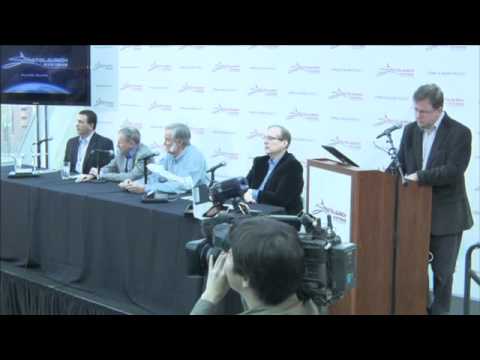1. Hobby Space has highlights of yesterdays Stratolaunch press conference
Rutan – Scaled Composites could build the airframe but would have to use many systems from existing vehicles like 747.
Stratolaunch will offer a cost advantage for medium size payloads
Paul Allen expects at least order of magnitude more than in SS1. (He put about $30M into SS1). So at least $300 million from Allen.
They will be using proven technologies as components and are not starting from scratch
For suborbital, air launch allows for much smaller rocket vehicle.
Ari launch advantage means a 5-10% smaller rocket stage, but for orbital, 5-10% improvement is great.
Burt Rutan did not design the Virgin Galactic Spaceship. The design work was done by younger folk at Scaled. Burt did concept work on these sorts of things.
Burt is retired so he does not even show up at work these days.
Younger people will do the designing of the Stratolaunch system.
Burt does not want to give numbers on the design to avoid helping competitors.
The air launcher will be able to carry other kinds of rockets.
Stratolaunch may build additional carrier aircraft but will depend on demand.
2. NY Times coverage of Stratolaunch
“You have a certain number of dreams in your life that you want to fulfill,” said Mr. Allen, an avid philanthropist who has also financed efforts like a radio telescope listening for alien transmissions, “and this [Stratolaunch] is a dream that I’m very excited about.”
At first, Stratolaunch will aim to carry smaller satellites like NASA science probes. “This is obviously a big initial investment,” Mr. Allen said, “that we wouldn’t be making if we didn’t think they were going to be a lot customers out there, both for cargo and manned missions in the future.
3. Wall Street Journal interview with Burt Rutan
Burt Rutan personally spent nearly two years as the chief engineer for the Stratolaunch concept.
Paul Allen opted for unusual transparency in this instance because he concluded it would be virtually impossible to maintain secrecy while a sprawling hangar was constructed in Mojave, Calif., to build a carrier plane with a wingspan of more than 380 feet. The entire venture, he said in an interview on Tuesday, “inherently wasn’t suited for a low-profile development program.”
The engineering team focused on the ability of “a small company like Scaled Composites to build the world’s largest airplane.” The answer, he said, is that Scaled Composites will leverage its extensive experience in integration and aerodynamics to meet the goal. And the task is simplified because the carrier plane will use engines, landing gears, hydraulic systems and even some flight-control hardware stripped off old Boeing 747 jumbo jets.
The cost of developing such a mammoth plane, Mr. Rutan added, “historically had been judged as prohibitive.” But the logjam broke after engineers came up with “innovative processes to build very large structures” out of composite materials, according to the veteran designer. “Now, it’s quite affordable,” Mr. Rutan said, and that’s one of the reasons the Stratolaunch team decided to lift the veil on the plans.
If you liked this article, please give it a quick review on ycombinator or StumbleUpon. Thanks

Brian Wang is a Futurist Thought Leader and a popular Science blogger with 1 million readers per month. His blog Nextbigfuture.com is ranked #1 Science News Blog. It covers many disruptive technology and trends including Space, Robotics, Artificial Intelligence, Medicine, Anti-aging Biotechnology, and Nanotechnology.
Known for identifying cutting edge technologies, he is currently a Co-Founder of a startup and fundraiser for high potential early-stage companies. He is the Head of Research for Allocations for deep technology investments and an Angel Investor at Space Angels.
A frequent speaker at corporations, he has been a TEDx speaker, a Singularity University speaker and guest at numerous interviews for radio and podcasts. He is open to public speaking and advising engagements.


